The third course at Bandon Dunes is Bill Coore and Ben Crenshaw’s Bandon Trails. Having arguably two of the three best courses of the modern ‘renaissance’ era (Sand Hills and Friar’s Head), they were an obvious choice for course #3. But apparently is was Mike Keiser more than they who had reservations about offering the third course to them because unlike the Bandon Dunes and Pacific Dunes, the third course would be confined to the forest around the south entrance drive and would only have room for a few holes in the dunes.
Apparently this didn’t deter Coore and Crenshaw and when you get into the forested part after playing the first two holes in the dunes, it’s easy to see why: the forest is absolutely gorgeous and the land is incredibly interesting. I find it hard to understand why Mike Keiser would have thought that a course on this land would be anything less than a slam dunk. Perhaps he was concerned that the big hill that separates holes 1-6 and 14-18 from holes 7-13 would make it difficult to create a cohesive routing and/or build a course without a few awkward holes. But these challenges notwithstanding, the property is excellent—hillier than than its coastal siblings, but not just on the side of a hill. There are plenty of interesting larger and smaller scale contours. And while often a drawback on other courses, the trees are among the most beautiful that I’ve seen on any course and never get in the way without reason.
Indeed the main controversy about Bandon Trails has become whether it’s actually the best course at the resort. It seems like the architecture purists and low handicappers like it, the purists probably because the land and the architecture are interesting with the latter never trying to outdo the former, and the low handicappers because it’s challenging, but gives you some room to miss around the greens (unlike Pacific Dunes), which themselves aren’t too wild (unlike Old MacDonald).
Since I fall in both categories and love a hike through big, beautiful trees, it was probably obvious that I would love this course. But there are a few points that I’d like to highlight at the outset, which I hope to clarify as I discuss the holes. For my liking, this might be the most beautiful course I’ve ever played. The variety of landscapes is outstanding but for me, the character of the forest is truly special. I’ve hiked in a lot of forests in a lot of different places, and this forest is both one of the most beautiful as a backdrop and has the among the best texture, with plants of many different shapes and colors when you look at them up close.
And I’m not sure that I seen golf architecture that blends so well with its surroundings. Even in the forested holes, the bunkers seem to disappear into their surroundings and the greens look like they’re sitting on unshaped land. I don’t know that I’ve ever seen a course that gets the small details of the shaping so right. Aesthetically, this course is a 10 for me. And as we’ll see, it’s not all just beauty—playing these holes well takes a good deal of thought.
The first hole here is a bit like the first hole at Sand Valley—a short par 4 where you shouldn’t cause yourself too much trouble if you’re just conservative off the tee. It’s a nice, ample fairway if this happens to be your first shot at the resort (like it was for us). But this green is also much wider than the first at Sand Valley and as long as you hedge toward the front of the green, you shouldn’t have too much trouble here.
Apparently this didn’t deter Coore and Crenshaw and when you get into the forested part after playing the first two holes in the dunes, it’s easy to see why: the forest is absolutely gorgeous and the land is incredibly interesting. I find it hard to understand why Mike Keiser would have thought that a course on this land would be anything less than a slam dunk. Perhaps he was concerned that the big hill that separates holes 1-6 and 14-18 from holes 7-13 would make it difficult to create a cohesive routing and/or build a course without a few awkward holes. But these challenges notwithstanding, the property is excellent—hillier than than its coastal siblings, but not just on the side of a hill. There are plenty of interesting larger and smaller scale contours. And while often a drawback on other courses, the trees are among the most beautiful that I’ve seen on any course and never get in the way without reason.
Indeed the main controversy about Bandon Trails has become whether it’s actually the best course at the resort. It seems like the architecture purists and low handicappers like it, the purists probably because the land and the architecture are interesting with the latter never trying to outdo the former, and the low handicappers because it’s challenging, but gives you some room to miss around the greens (unlike Pacific Dunes), which themselves aren’t too wild (unlike Old MacDonald).
Since I fall in both categories and love a hike through big, beautiful trees, it was probably obvious that I would love this course. But there are a few points that I’d like to highlight at the outset, which I hope to clarify as I discuss the holes. For my liking, this might be the most beautiful course I’ve ever played. The variety of landscapes is outstanding but for me, the character of the forest is truly special. I’ve hiked in a lot of forests in a lot of different places, and this forest is both one of the most beautiful as a backdrop and has the among the best texture, with plants of many different shapes and colors when you look at them up close.
And I’m not sure that I seen golf architecture that blends so well with its surroundings. Even in the forested holes, the bunkers seem to disappear into their surroundings and the greens look like they’re sitting on unshaped land. I don’t know that I’ve ever seen a course that gets the small details of the shaping so right. Aesthetically, this course is a 10 for me. And as we’ll see, it’s not all just beauty—playing these holes well takes a good deal of thought.
The first hole here is a bit like the first hole at Sand Valley—a short par 4 where you shouldn’t cause yourself too much trouble if you’re just conservative off the tee. It’s a nice, ample fairway if this happens to be your first shot at the resort (like it was for us). But this green is also much wider than the first at Sand Valley and as long as you hedge toward the front of the green, you shouldn’t have too much trouble here.
The par 3 second makes up for the lack of trouble at the first and then some if you play the 230 yard back tees. One, it’s incredibly intimidating from the tee. Two, if you’re even with the green and miss wide, you might just want to walk to the next tee. But that’s also the beauty of the hole—if you just hedge short, it’s very playable. You can’t see all of the open space in front of the green, but there’s plenty there. So the smart play from the back tees is to pick a club that gets you near the front of the green, but not past that.
Although I made an absolute mess of this hole, it was one of my favorite par 3s at the resort. It’s still a good challenge if you move up a set of tees to 170 yards because you still face the issue of the green getting narrower the deeper you hit into it.
Although I made an absolute mess of this hole, it was one of my favorite par 3s at the resort. It’s still a good challenge if you move up a set of tees to 170 yards because you still face the issue of the green getting narrower the deeper you hit into it.
We head into the forest with the par 5 third and it’s pretty clear immediately that the course won’t lose any interest. This image from the tee is absolutely gorgeous and that has nothing to do with my photography skills—the coast lodgepole pines with moss hanging off the branches and the various sized shrubs that dot the landscape…mmm. Actually this course reminded me a lot of pictures I’ve seen of Japan, with its coniferous trees of various heights and shapes. And you can’t give a landscape job a much higher complement than to say it looks Japanese.
Anyway, so how about the hole itself? It’s a good one. Bunkers start on the left at about 220 yards and there’s a centerline bunker about 290 from the tips. The left side is a shortcut and might bring the green within reach in two. But there’s much more room to the right (more than appears) and if you have the length to reach this green up the left, you probably have the length to reach it from the right. If you can’t, lay up short of centerline bunkers that start at 90 yards.
Anyway, so how about the hole itself? It’s a good one. Bunkers start on the left at about 220 yards and there’s a centerline bunker about 290 from the tips. The left side is a shortcut and might bring the green within reach in two. But there’s much more room to the right (more than appears) and if you have the length to reach this green up the left, you probably have the length to reach it from the right. If you can’t, lay up short of centerline bunkers that start at 90 yards.
I think that the 400 yard par 4 fourth is one of the best holes that I’ve seen of this length anywhere. You get a clue from the tee what makes it so good; there’s a ridge in the fairway that runs from short-left to long-right, in the direction of the green. This ridge bisects the fairway and if you can carry over it, you’ll have a clear view of the green.
But here’s the catch: it’s a much longer carry over the ridge up the right side (probably 270 if you go over the right bunker) than over the small centerline bunker on the left (maybe 220). But if you hedge too far left, your ball can kick forward off the other side of the ridge into fairway bunkers. Even if it doesn’t, the further left you are, the more difficult the shot into the green, which is skinny but deep and angles toward the right side of the fairway. Plus, it slopes from left to right. So this hole really rewards someone who hits a long ball up the right side.
As someone who doesn’t, I think it’s still best to play up the right side and take the blind second. It’s easy to run into the bunkers on the left and the tilt of the green makes for a very tough shot, even if you’re in the fairway.
But here’s the catch: it’s a much longer carry over the ridge up the right side (probably 270 if you go over the right bunker) than over the small centerline bunker on the left (maybe 220). But if you hedge too far left, your ball can kick forward off the other side of the ridge into fairway bunkers. Even if it doesn’t, the further left you are, the more difficult the shot into the green, which is skinny but deep and angles toward the right side of the fairway. Plus, it slopes from left to right. So this hole really rewards someone who hits a long ball up the right side.
As someone who doesn’t, I think it’s still best to play up the right side and take the blind second. It’s easy to run into the bunkers on the left and the tilt of the green makes for a very tough shot, even if you’re in the fairway.
The 130 yard par 3 fifth was a favorite in my group and that certainly doesn’t suggest any fault in our taste. Obviously, it’s another beautiful hole. But, as is reasonable for a hole of this length, there’s also a lot going on with the green. It’s sort-of a two-tiered biarritz, where the back tier is higher than the front tier. But unlike most biarritzes, there are also a lot of little slopes within each level and at the edges.
The sixth is another ~400 yard par 4 and is a bit complicated. The fairway is clearly bifurcated into a high right and a low left side. The centerline bunker up the right is about a 250 carry and if you can go right of or carry this, you would think that this would leave you the best approach.
And it might most of the time (I didn’t try it), but there’s also a danger: too strong a drive on this line could kick forward into a bunker about 290 out. If playing this line, you probably have to land your ball near the bunker so that it takes the slope left into the center of the fairway. And if you carry the centerline bunker on its left side with some steam, you could run into a blind centerline bunker about 300 out.
Or you can just play up the wide left side of the fairway (much wider than it seems), which will leave a more awkward angle for the approach, but one that won’t be too long if you’ve hit a decent drive. I suspect this is the most sensible play for almost everyone.
And it might most of the time (I didn’t try it), but there’s also a danger: too strong a drive on this line could kick forward into a bunker about 290 out. If playing this line, you probably have to land your ball near the bunker so that it takes the slope left into the center of the fairway. And if you carry the centerline bunker on its left side with some steam, you could run into a blind centerline bunker about 300 out.
Or you can just play up the wide left side of the fairway (much wider than it seems), which will leave a more awkward angle for the approach, but one that won’t be too long if you’ve hit a decent drive. I suspect this is the most sensible play for almost everyone.
The long par 4 seventh is far less complicated. Hugging the big bunker on the right allows both you to avoid carrying the bunker short-left of the green and to play into the primary slope of the ground. Still, I don’t think it’s such an advantage to be here over the middle of the fairway so this is a drive where you can relax. But you’d better hit a solid approach into the green, which has a false front and is two-tiered.
Along with the second, the 320 par 4 eighth was the primary source of my ‘strokes over par’ in my two round on Bandon Trails. It’s clearly narrower than what we’ve played so far. The smart thing to do here is hit it about 210 yards, which keeps you short of the right bunker. But it’s certainly tempting to go for it and if you’re confident in your driver, it’s probably not a bad play—just don’t pump it into the bushes in the right or snap hook it down the hill on the left.
The long (~565 yard) par 5 ninth is very beautiful and very interesting, but in a subtle way. The drive is actually pretty simple; the bunker straight ahead is about 330 out, so you probably don’t have to worry about that. Other than needing to avoid a snap hook into the bunker/crap left, it’s one of the least-demanding drives on the course.
Different from just about every other par 5, the most interesting shot here is the layup. There’s a pretty long bunker that starts about 150 yards from the center of the green on the left. On the right, big trees encroach and the space between narrows until you’re about 110 yards from the center. So it makes sense to lay back just short of that, maybe to 125 yards.
Ten is a par 4 of 420 yards where the strategy is pretty clear from the tee: hug the left fairway bunker and have a fairly open approach into the green, hit to the more ample right side of the fairway and have to come in over the vast right green side bunker. Very simple, very good.
I absolutely love the long par 4 eleventh although into the wind each time I played it, it was very tough. There’s endless room left off the tee but it’s pretty important to be near the bunkers on the right because you’ll want to shorten the hole. If not into the wind, you might be able to carry them at about 260, but it’s probably always best to hedge a bit left here as you can run down a hill into junk on the right.
The approach into the green is glorious—this is probably the best-looking pond hole that I’ve ever seen (certainly our many goose-shit-surrounded examples in southeastern Michigan don’t provide much competition). It’s also an interesting approach, straight-forward if you’ve driven it up the right side, but requiring negotiation of a bunker about 30 yards short of the front of the green on the left. You’ll want to hedge away from the pond for the obvious reason that it’s a pond, but also because there’s a subtle left-to-right tilt in the land that can feed your ball onto the green.
I love a long par 3 that allows you to run the ball onto the green but the twelfth was a bit dull for my tastes. There’s a nice visual illusion with the left bunker—it’s still 60 yards from the front of the green at its closest. Much more relevant is the big mound at the right edge of the green which can cause much trouble for a shot flared right.
The thirteenth—another 400 yard par 4—is an outstanding driving hole. It seems like there’s a lot of room on the right but there isn’t; the trees start at about 240 from the tips and the right side of the fairway slopes toward them. I wouldn’t recommend hitting it over here but I would absolutely recommend ball-hunting here; searching for a playing partner’s ball for a few minutes, I found a half-dozen new Pro-V1s and Taylor Made TP5s.
It’s a bit tougher to get yourself to play up the left side because the trees encroach and the bunkers start at about 250. So unless you’re confident in your driving accuracy, it might be best to lay back a bit. The approach is a tough one to an elevated plateau green. Missing short or long is alright, but to either side is not.
It’s a bit tougher to get yourself to play up the left side because the trees encroach and the bunkers start at about 250. So unless you’re confident in your driving accuracy, it might be best to lay back a bit. The approach is a tough one to an elevated plateau green. Missing short or long is alright, but to either side is not.
You get your one opportunity here to ride in a cart (actually the back of a trailer) for the 180 yard, 60 foot uphill journey to the fourteenth tee. Not wanting to wait for everyone to pile in, I just walked. Apparently they offer the choice now because someone had a heart attack walking up this hill. If that did it, he probably wasn’t long for this world anyway.
If you don’t have a heart attack walking to the fourteenth tee, you might have one trying to play the fourteenth hole, a short par 4 that has attained substantial notoriety. The fairway is wide but the green is very narrow, angled toward the left side of the fairway. What makes this hole so difficult is a drop-off left of the green, which could cause back-and-forth chipping, especially if the flag is in the front. Our flags were in the back both times and I didn’t find the chip from left of the green here too bad.
I can see how the hole could cause some frustration, but I didn’t find it to be too tough…even though we had to play it in wind and rain that had materialized out of nowhere.
If you don’t have a heart attack walking to the fourteenth tee, you might have one trying to play the fourteenth hole, a short par 4 that has attained substantial notoriety. The fairway is wide but the green is very narrow, angled toward the left side of the fairway. What makes this hole so difficult is a drop-off left of the green, which could cause back-and-forth chipping, especially if the flag is in the front. Our flags were in the back both times and I didn’t find the chip from left of the green here too bad.
I can see how the hole could cause some frustration, but I didn’t find it to be too tough…even though we had to play it in wind and rain that had materialized out of nowhere.
Fifteen is another 400ish yard par 4 that should be quite simple; just stay short of the bunker that starts on the right about 100 yards short of the green. And actually, hedging left where the fairway is more open is good because this opens up the angle of the green a bit.
We start to get a bit more of the dunes-feel again on the par 5 sixteenth, which is probably the course’s easiest driving hole. The bunker on the left is probably 310 out so you can probably let it rip. And if you hit a big slice, the hill on the right side will bring it back toward the middle.
The bunkers on the right start about 100 yards short of the green but if you think you can reach the green, slopes on the left side will help funnel your ball toward the green. Otherwise it’s a simple lay up and a fairly simple, if uphill and semi-blind, wedge shot. A bit short is ok; don’t miss this green left.
The par 3 seventeenth is Bandon Trails' PR material hole and it’s certainly well-chosen. It’s actually a pretty difficult par 3. It’s only about 170 from the tips but there’s a big ridge and false front at the front of the green and not too much space between the bunkers up on top. It’s one of the most demanding iron shots on the course.
Apparently eighteen is 420 from the tips but we probably played it from about 360. Wherever they put the tees, obviously you don’t want to miss right. There’s a hill in the fairway about 150 yards short of the center of the green and if you clear it, you’ll get a few more yards. A straight-forward, but solid finish.
Given my love of hiking and a good forest, I was predisposed to like Bandon Trails. But the architecture is every bit its match. It’s probably kind of hard for a lot of people to talk about the architecture because it all feels so effortless. Everything blends into the surroundings, the slopes on and around the greens are subtle. But it must have taken extraordinary talent and hard work to make everything seem so effortless. Obviously a golf course is not a natural thing; they had to cut down a lot of trees and rough up the ground to make the slopes on and around the tees and greens playable for golf and to plant grass. That it looks like they didn’t do anything is the ultimate testament to the quality of the work. This is an extraordinary work of landscape architecture.
And I’d say the same thing about the strategies of the holes. Nothing jumps out here; there are no super visually dramatic holes with extreme bunkers and slopes (even the fourteenth doesn’t look troubling). But if you look closely, a lot of thought went into each of these holes and a shot played to one part of the fairway will always set you up better than one played to another. I especially appreciate how the contour of the ground generates so much of the interest in many of these holes. The fourth has to be one of the world’s greatest uses of contour as a driving hazard/opportunity, outdoing every hole even at Colt’s St. George’s Hill, a course which is the pinnacle of using contour as a driving challenge.
Ultimately discussion of any course at Bandon becomes one of where it falls in the Bandon hierarchy. And for me—and it seems many others including most in my group of eight—Trails is in the top 2 (which is the other is more controversial). I’m not sure that I’d have it ahead of Pacific Dunes because that course has several extraordinary holes, is very cleverly routed on an awkward piece of land, and has outstanding balance in its design. But it’s quite a bit harder than Bandon Trails, especially if you’re not highly accurate with your irons. Irons are the strength of my game, so I liked the challenge and so far would give Pacific Dunes the nod.
But I also only played Pacific Dunes once and played well, so if given a few more opportunities, it might give me some of the same frustration that it gives others. It’s not as relaxed a course as this one. So I’ll give the nod to Pacific Dunes for now but note that I’ll have to save the final verdict for a future trip.
And I’d say the same thing about the strategies of the holes. Nothing jumps out here; there are no super visually dramatic holes with extreme bunkers and slopes (even the fourteenth doesn’t look troubling). But if you look closely, a lot of thought went into each of these holes and a shot played to one part of the fairway will always set you up better than one played to another. I especially appreciate how the contour of the ground generates so much of the interest in many of these holes. The fourth has to be one of the world’s greatest uses of contour as a driving hazard/opportunity, outdoing every hole even at Colt’s St. George’s Hill, a course which is the pinnacle of using contour as a driving challenge.
Ultimately discussion of any course at Bandon becomes one of where it falls in the Bandon hierarchy. And for me—and it seems many others including most in my group of eight—Trails is in the top 2 (which is the other is more controversial). I’m not sure that I’d have it ahead of Pacific Dunes because that course has several extraordinary holes, is very cleverly routed on an awkward piece of land, and has outstanding balance in its design. But it’s quite a bit harder than Bandon Trails, especially if you’re not highly accurate with your irons. Irons are the strength of my game, so I liked the challenge and so far would give Pacific Dunes the nod.
But I also only played Pacific Dunes once and played well, so if given a few more opportunities, it might give me some of the same frustration that it gives others. It’s not as relaxed a course as this one. So I’ll give the nod to Pacific Dunes for now but note that I’ll have to save the final verdict for a future trip.



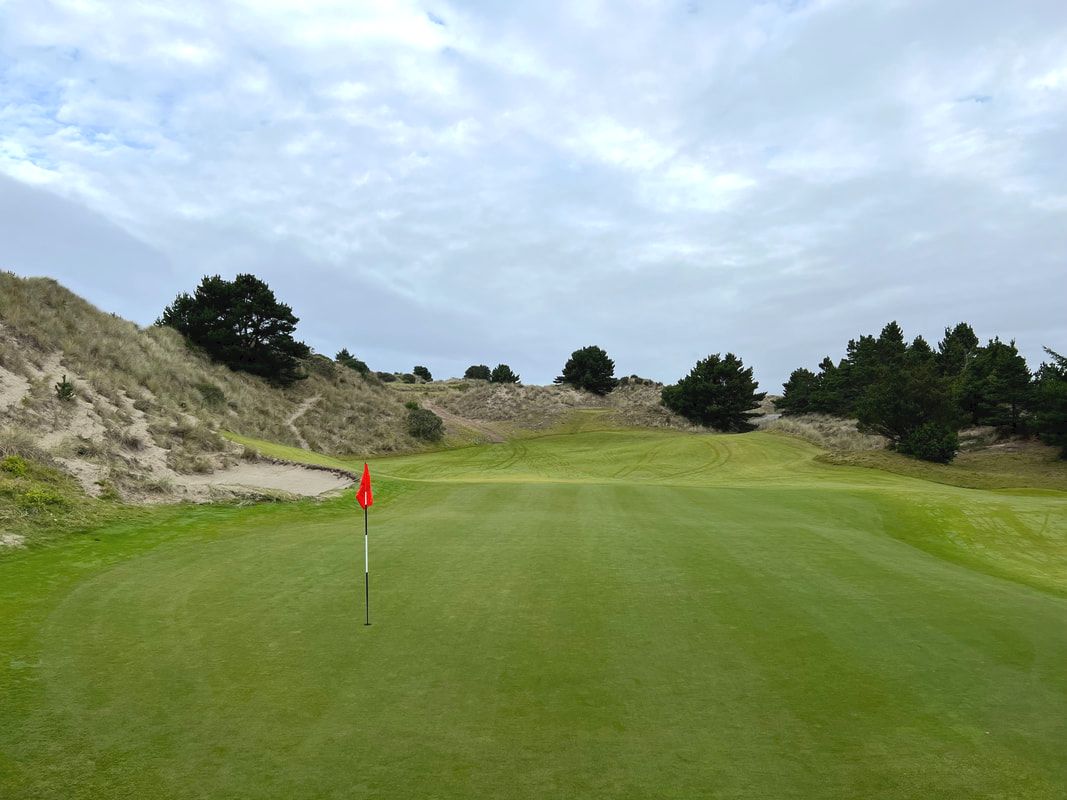

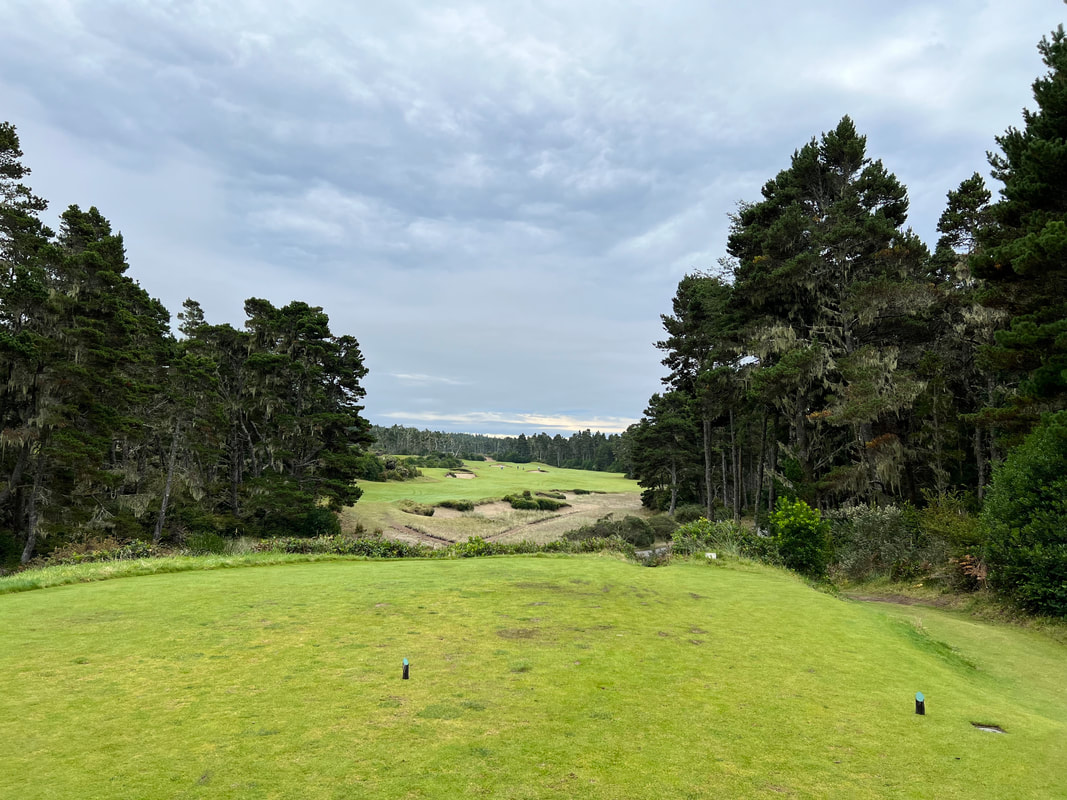















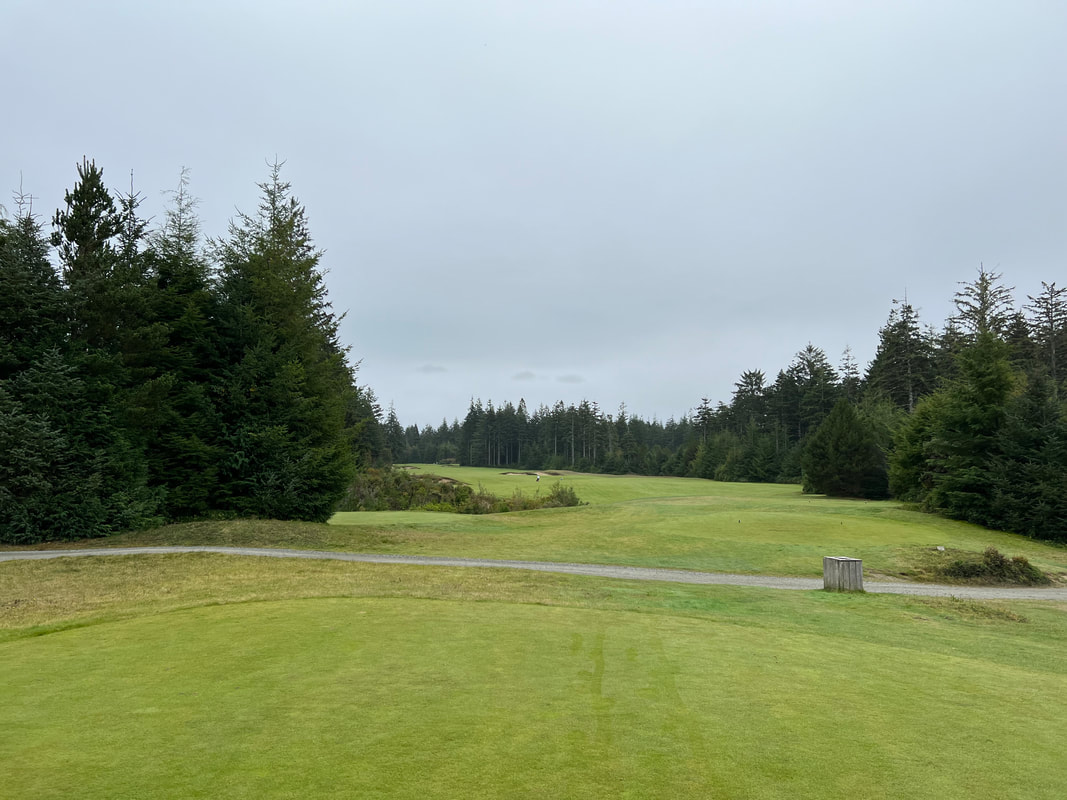






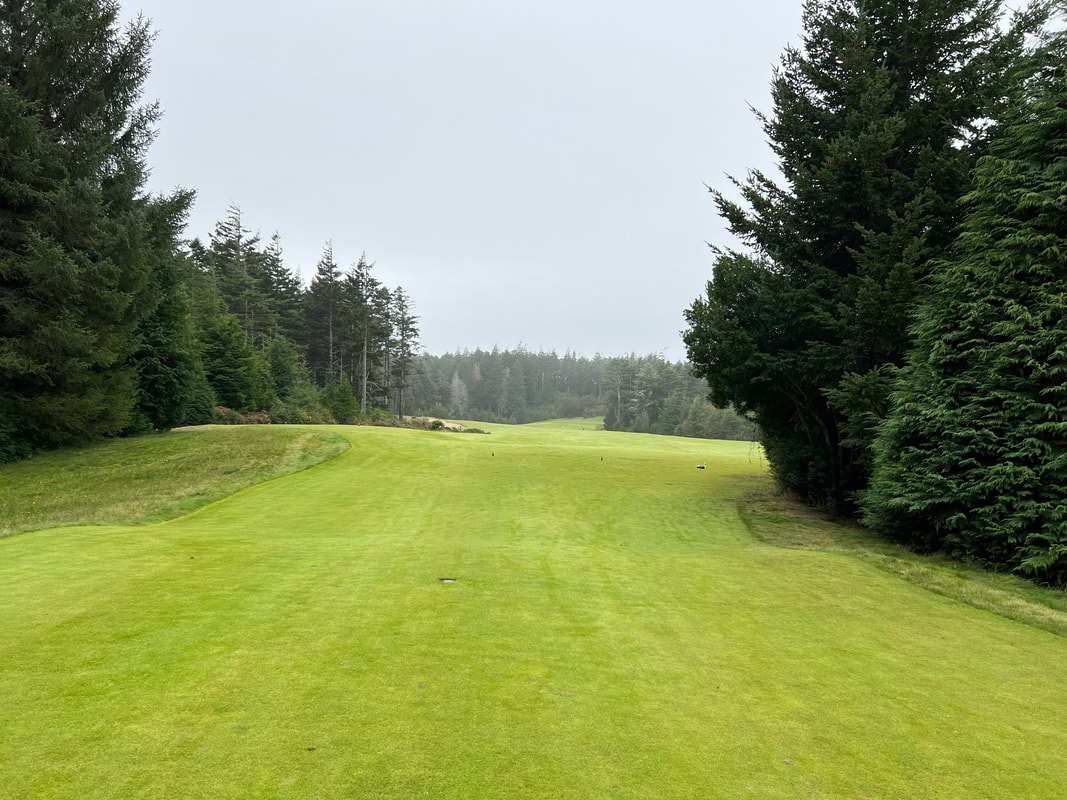
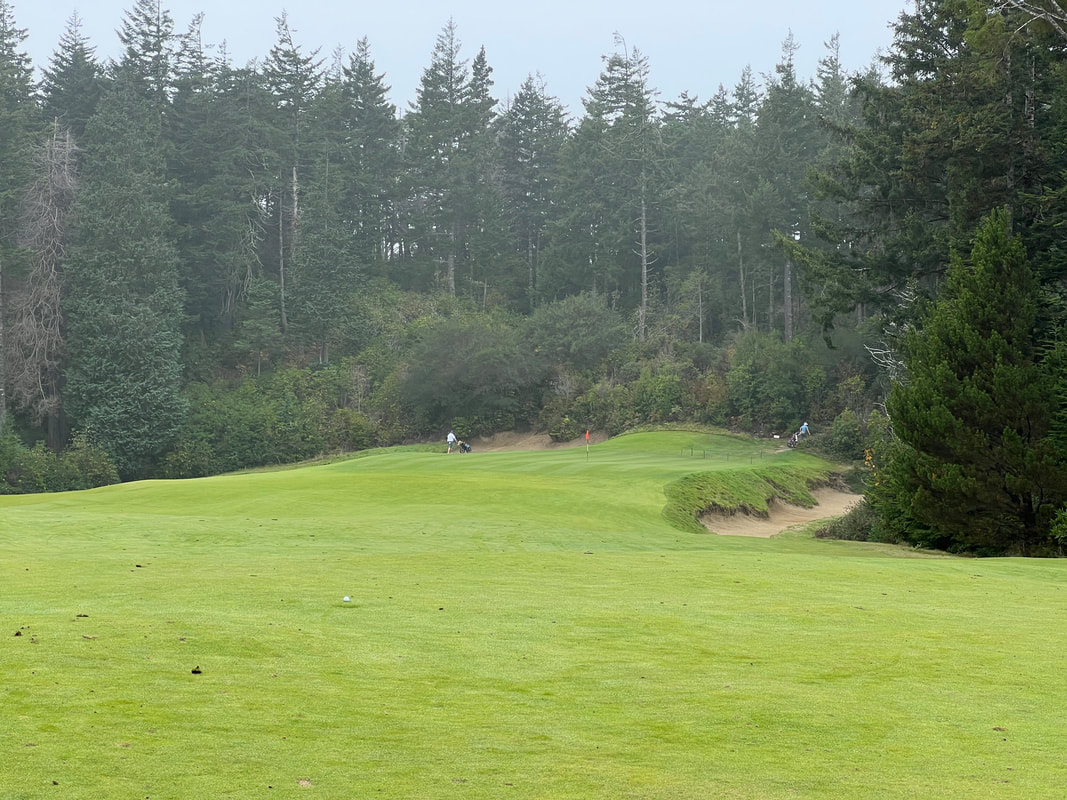


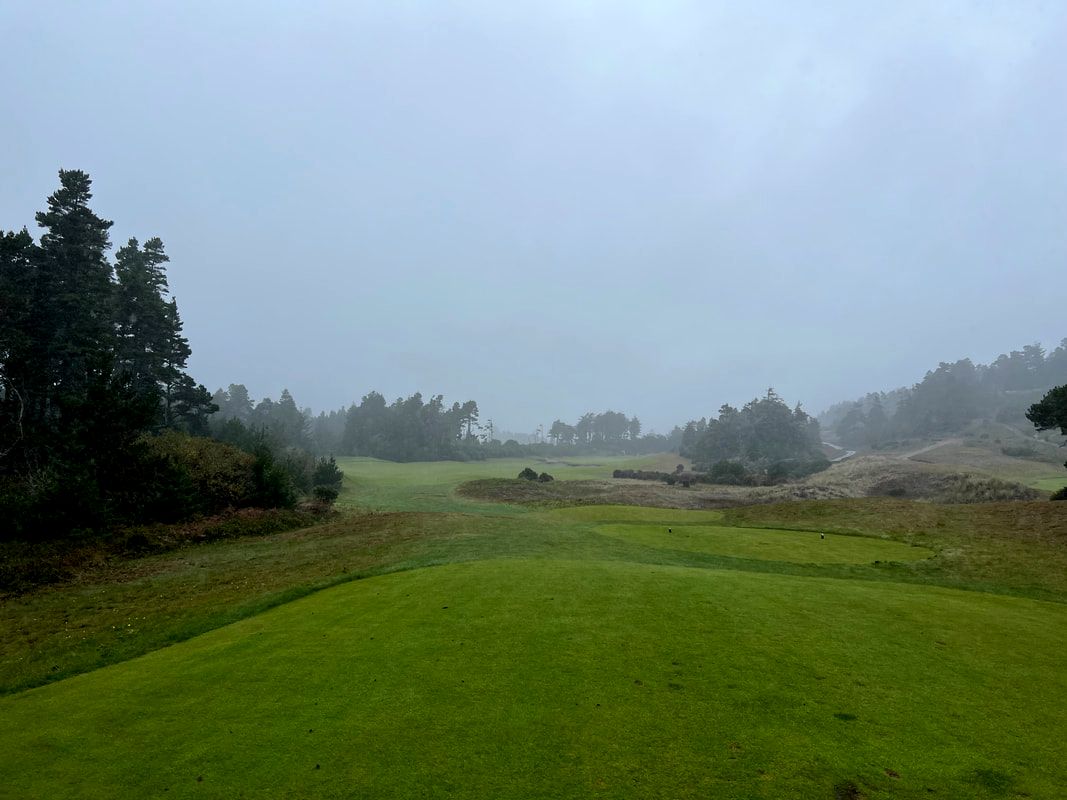









 RSS Feed
RSS Feed